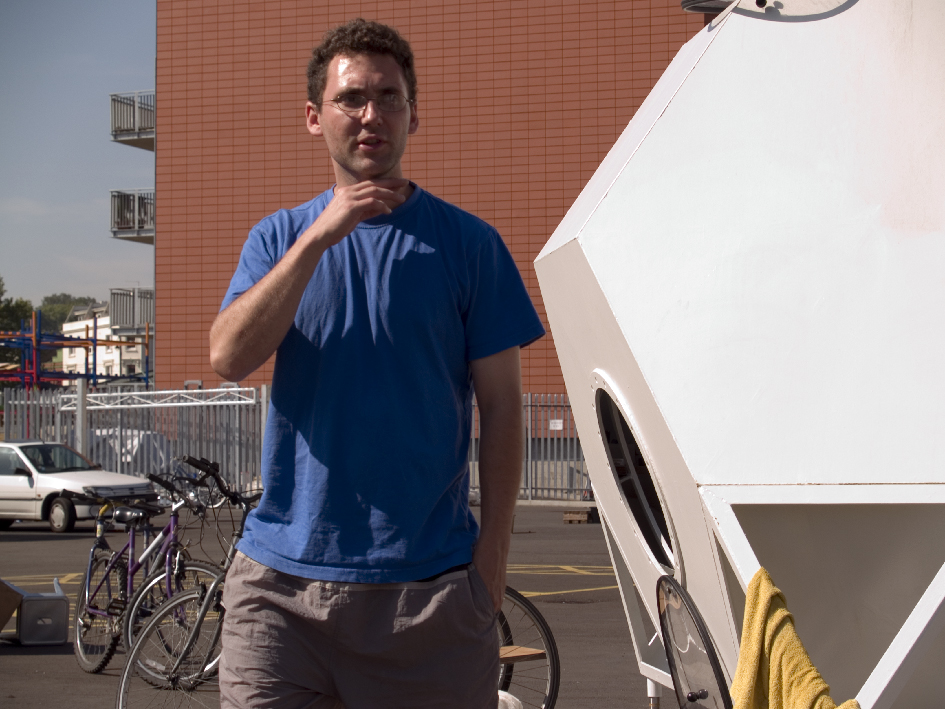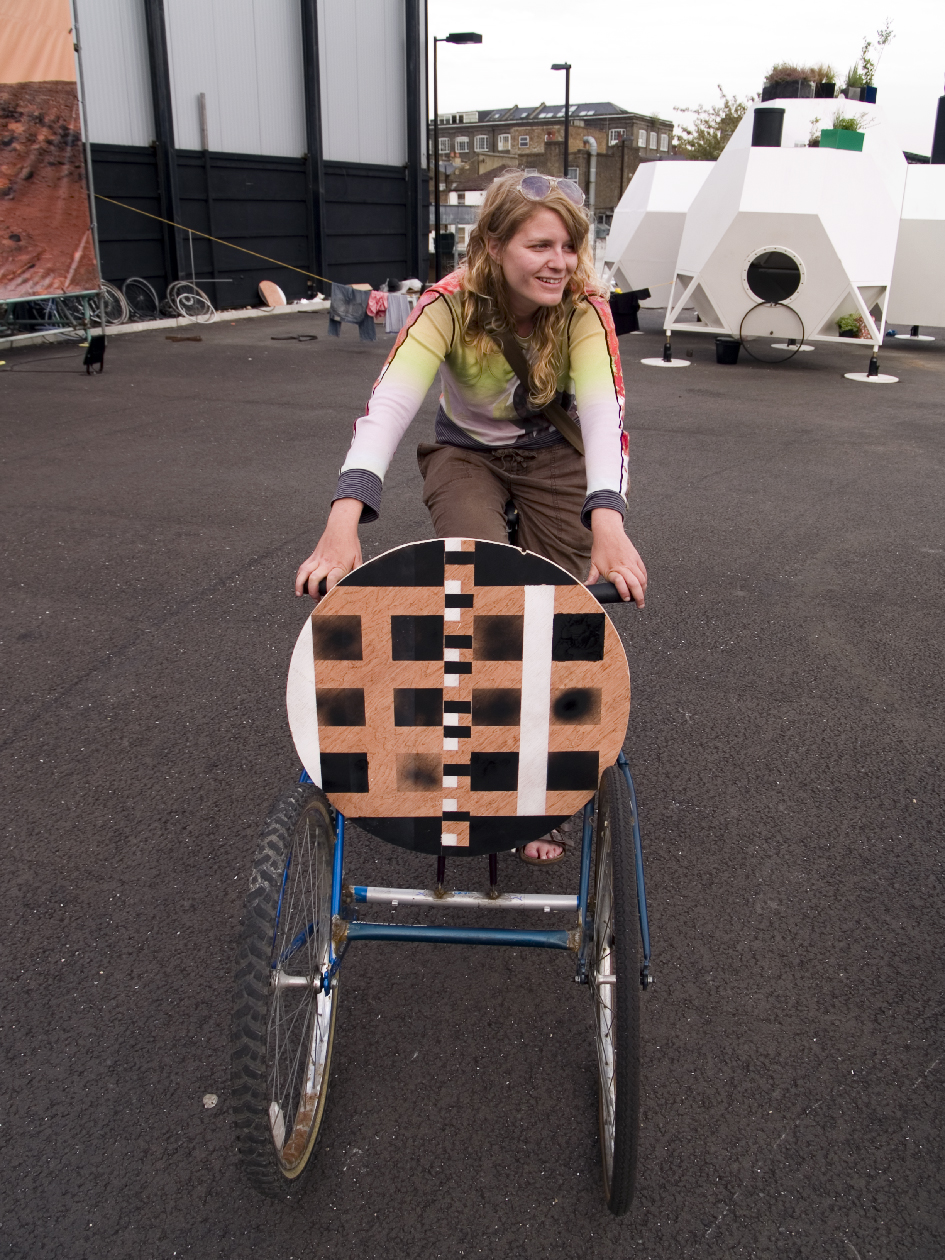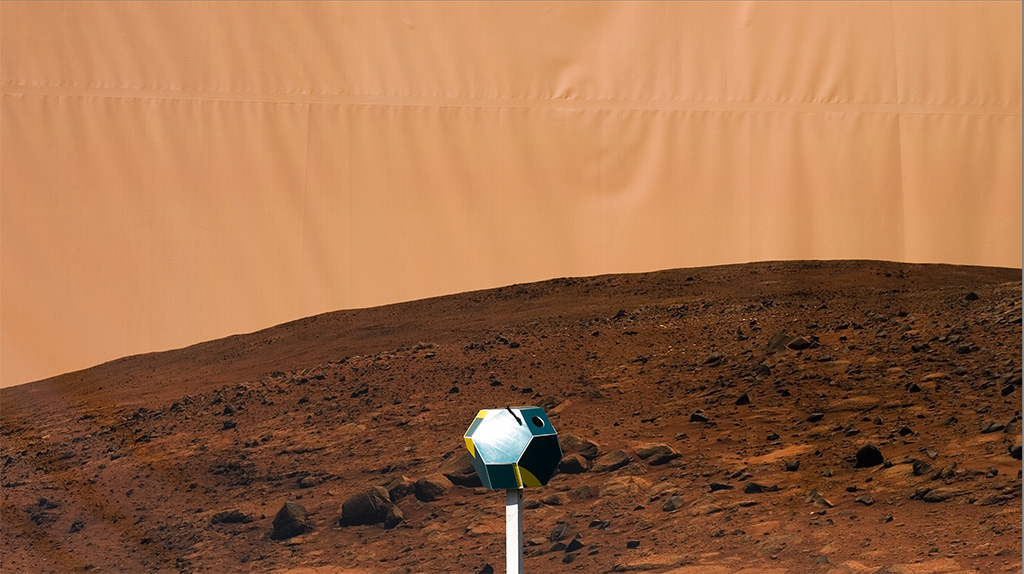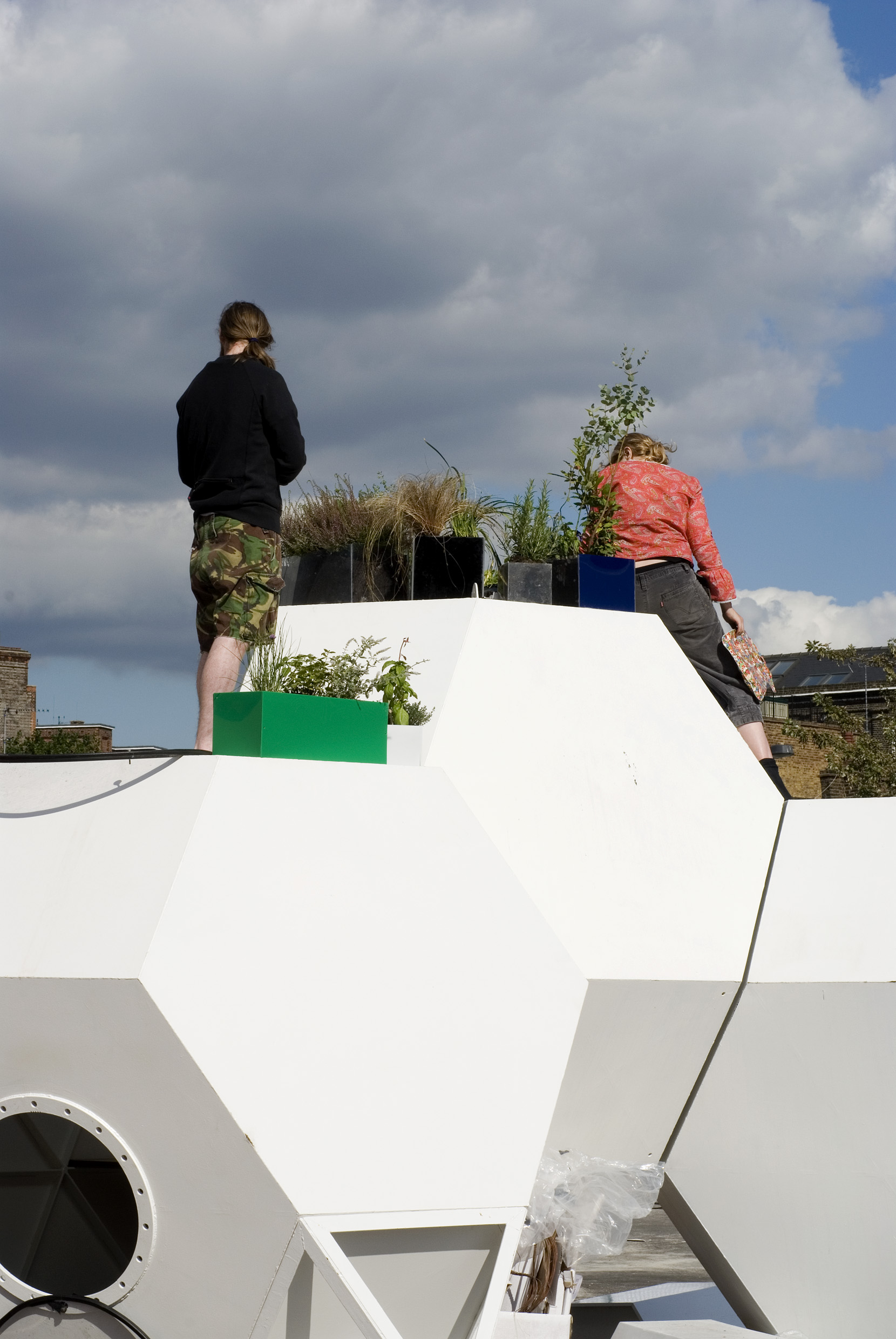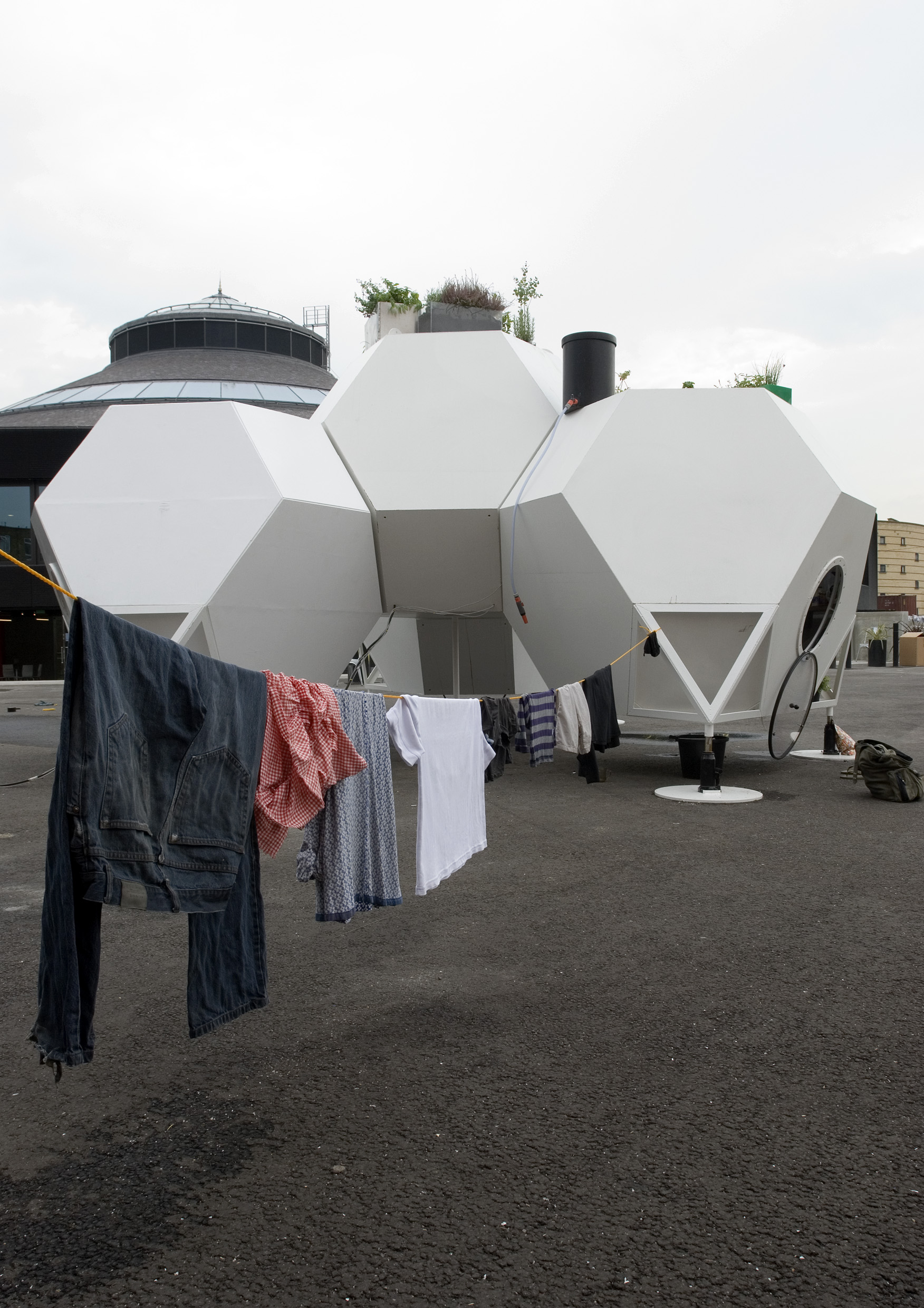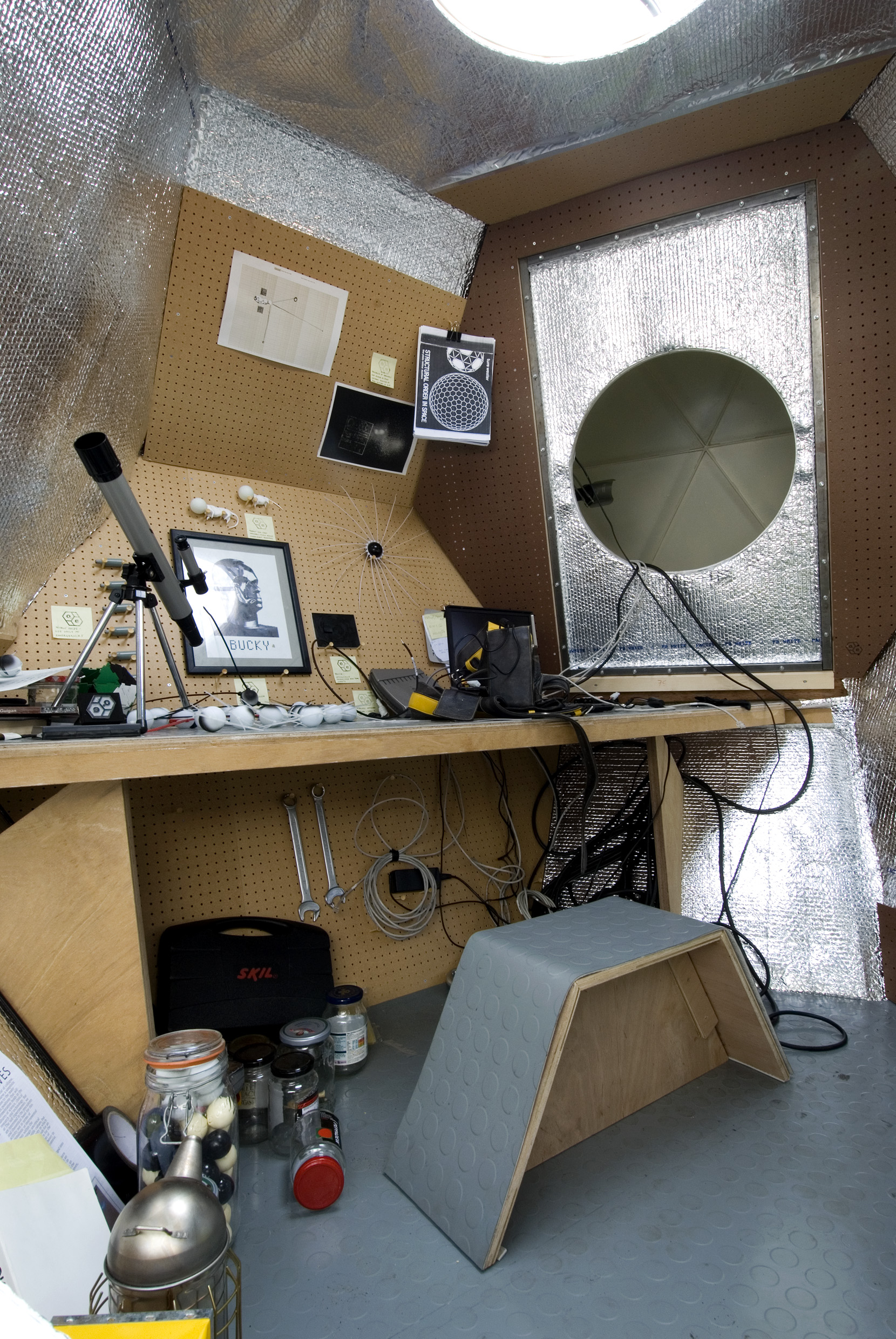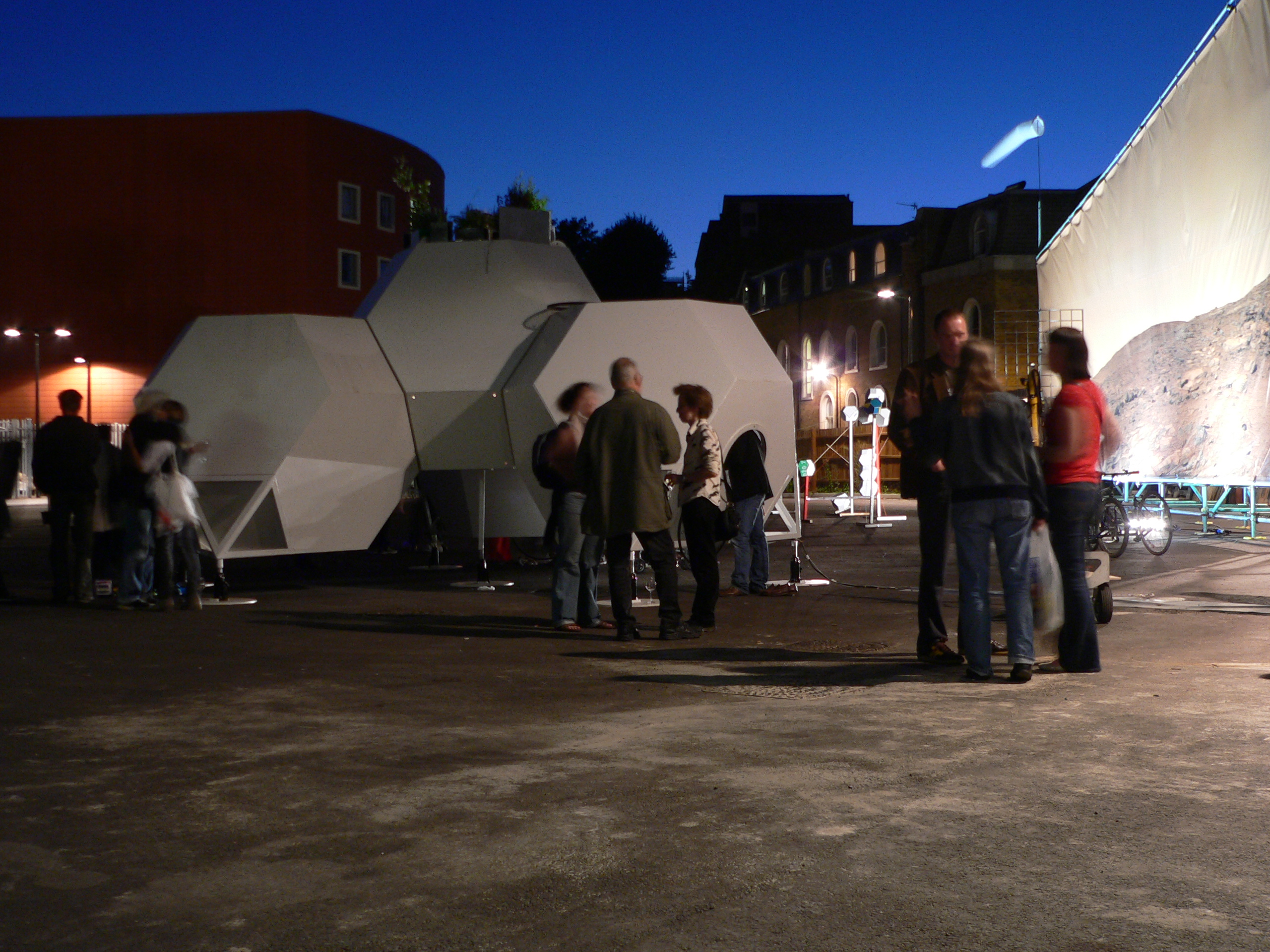Space on Earth Station with Office of Experiments
Camden RoundhouseLondon
2006


Space on Earth Station.
Exhibited 2006Supported by the Arts Catalyst (Rob La Frenasis, Nicolar Triscott, Gillean Dickie), Arts Council of England and Camden Roundhouse. September 9-13, 2006
Developed with two members of N55, Ingvil Hareide Aarbakke and Ion Sørvin, based in Copenhagen, we aimed to create a platform for experimentation in low-impact living, and the testing of DIY sensing etc., using this sculpture as an inhabitable structure. Developed with a specific focus on the Whole Earth Catalogue (and not Stewart Brand), our project focused on systems to allow for conservation, ecology and urban living, whilst minimising the overall impact of human activity. The office that was established to evaluate and coordinate experiments became both a test laboratory and temporary office space within Arts Catalyst, and then a lab space on the station itself.
The context for this project was President Bush aim to spend billions of dollars on a mission to Mars, highlighted by the image in the background taken from a Mars Rover. In what we understood to be as a signal that the earth was doomed, we worked together to create an alternative vision for the future. A form of ethical experimentation, as Isabelle Stengers would put it.
The project took two years to conceive and build, and was installed for 4 days only - and has not been reconfigured, in part due to the passing of the briliiant and inspiring Ingvil Aarrbakke of N55.
The SOES was live and open to the public to coincide with the exhibition SPACE SOON.
Arts Cayalyst:
For a short, intense period the Roundhouse was transformed into a rocket factory for a rocket going nowhere - Gravity by Aleksandra Mir. Outside, N55 and Neal White’s Space on Earth Station reversed into the future, while in the labyrinth of Roundhouse Studios, London Fieldworks investigated long-term space travel in SpaceBaby, while on the upper floors Michelle Griffiths constructed her Lunar Capsule. In the lead up to, and over the five days of its duration, Space Soon unfolded a spectacular succession of art and space events.
N55 Module - Micro Dwelling
The key concept behind the modular structure developed by N55 was that of Peter Pearce (a former colleague of Buckminster Fuller) vision for a ‘min a max’ system of building. N55 reconfigured Pearce’s proposed truncated octahedron forms as a plate structure that could be used to make ‘micro-dwellings’. Working together, the structure of the space on earth station was conceived as a platform using this modular approach. The modules were built in Copenhagen (marine steel) and London (marine plywood), to fit onto standard EU pallet sizes to minimise cost and weight. The modules were assembled in situ on site in Camden in September 2016.
On site experiments
Following a call for experiments on the Space Station, a website was developed and following a process of dialogue with applicants, a small group of artists were selected to work on site. Marcus Ahlers (Berlin) created Solar Ovens for cooking, Kayle Brandon (irational, Bristol) created her own skip module, whilst gathering food from wild local sources, and Alex Lockett (Birmingham) built a sustainable garden on top of the station itself.
Further experiments developed by Neal White and N55 included bird house modules - a bird box estate, made from recycled estate agent signs, a bee-hive module, wifi-hive networks for sensing. Transportation and living hacks by n55 included, hacked bicycles, water cooler bottles repurposed as washing machines, grey water and slar heating, amongst others.
